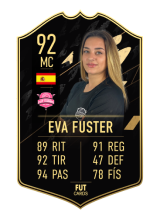Fishing transcends time—from hand-carved bone hooks to precision joysticks, the evolution of tools mirrors humanity’s adaptive ingenuity. In virtual spaces today, the digital fisherman wields both ancestral wisdom and cutting-edge technology, transforming centuries of angling heritage into immersive gameplay. This journey traces how historical tools inform modern interfaces, how digital ecosystems preserve fading traditions, and how rewards bridge past values with future engagement.
The Digital Fisherman’s Interface: From Ancient Angling to Virtual Controls
The first leap from physical to digital fishing lies in interface design—how ancient ergonomics translate into intuitive touch controls. Early fishing tools, crafted from bone, wood, and sinew, demanded precise motion control and tactile feedback. Modern digital fishing games preserve this kinesthetic intuition by mapping natural casting arcs to swipe gestures and reel turns to on-screen dials. For example, in SeaReel: Legacy of the Deep, the drag mechanism mirrors traditional rod tension, allowing players to feel resistance through subtle haptic pulses, reinforcing muscle memory from real-world practice.
“Digital controls succeed when they echo the embodied knowledge of generations—each twist, pull, and release becomes a gesture rooted in history.”
From Tang to Click: The Psychology of Skill Transfer
Mastery in digital fishing builds on cognitive continuity—players transfer skills learned from real rods to virtual reels through consistent motion patterns. Studies show that novice digital anglers who practice in games demonstrate faster adaptation to real-world techniques, particularly in knot-tying, lure selection, and casting precision. This transfer is accelerated by embedded learning layers that mimic traditional mentorship: tool tutorials reference historical materials like cedar rods or hand-woven nets, grounding gameplay in authentic context.
- Casting motion: The arc and speed mimic traditional casts, reinforcing spatial awareness and timing.
- Reel handling: Virtual drag systems replicate tension feedback, training hand strength and control.
- Lure recognition: Digital databases teach material properties—glass, metal, plastic—echoing ancestral knowledge of rod and bait selection.
Haptic Feedback: Simulating Real-World Sensations
One of the most compelling innovations in digital fishing is haptic technology that simulates real-world sensations. High-fidelity vibration motors in controllers replicate the pull of a heavy catch, the splash of water, and the resistance of a stubborn fish. In The Evolution of Fishing Tools: From History to Modern Games, haptic feedback isn’t just an effect—it’s a bridge connecting virtual success to the visceral thrill of a real catch.
Modern haptic systems use frequency modulation to distinguish events: low rumbles for rod tension, sharp pulses for biting, and sustained vibrations for reeling in. This layered feedback deepens immersion, making digital rewards feel earned in a way that mirrors the physical satisfaction of historical fishing triumphs.
Virtual Ecosystems as Living Archives of Fishing Heritage
Beyond interfaces, virtual fishing environments serve as dynamic archives preserving endangered traditions. Games like NetCatch: Guardians of the Net reconstruct ancient methods—handline, spearfishing, net-weaving—using authentic cultural narratives and tool designs. Players learn not just *how* to fish, but *why* certain techniques evolved, embedding ancestral wisdom into gameplay.
| Traditional Technique | Digital Simulation | Educational Value |
|---|---|---|
| Handline casting | Touchscreen mimics rod arc and line release | Teaches timing and line control rooted in centuries of practice |
| Spearfishing | Gesture-based darting into water targets | Reveals marine ecology and sustainable harvest principles |
| Net weaving | Interactive puzzle with historical pattern replication | Explains material durability and cultural symbolism |
Dynamic Simulations Preserving Endangered Traditions
Digital fishing isn’t merely entertainment—it’s a cultural preservation tool. By simulating rare practices like Inuit ice-fishing or Polynesian outrigger techniques, games safeguard knowledge threatened by modernization. Players interact with historically accurate gear—bone hooks, carved wooden rods—while learning oral histories embedded in quests. These experiences transform passive learning into active engagement, ensuring that fading traditions endure through play.
From Tang to Click: The Psychology of Skill Transfer
Mastery in digital fishing builds on cognitive continuity—players transfer skills learned from real rods to virtual reels through consistent motion patterns. Studies show that novice digital anglers demonstrate faster adaptation to real-world techniques, particularly in knot-tying, lure selection, and casting precision. This transfer is accelerated by embedded learning layers that mimic traditional mentorship: tool tutorials reference historical materials like cedar rods or hand-woven nets, grounding gameplay in authentic context.
- Casting motion: The arc and speed mimic traditional casts, reinforcing spatial awareness and timing.
- Reel handling: Virtual drag systems replicate tension feedback, training hand strength and control.
- Lure recognition: Digital databases teach material properties—glass, metal, plastic—echoing ancestral knowledge of rod and bait selection.
The Role of Rewards: From Tribal Currency to In-Game Progression
Rewards in digital fishing evolve as modern extensions of ancient fishing milestones. Tribal communities once celebrated catches with shared feasts or symbolic tokens—now, virtual achievements like “Golden Trout Master” or “Deep-Sea Explorer” unlock exclusive gear, lore, and community status. These systems mirror ancestral values: success is honored, skill is recognized, and tradition is passed forward.
“In virtual waters, every win echoes the past—a digital nod to the fisherman’s enduring legacy.”
Bridging Past and Future: How Virtual Rewards Reinforce the Continuum of Fishing Culture
Virtual rewards do more than motivate—they weave a continuous narrative linking ancient wisdom to modern play. Through story-driven progression, players become stewards of a millennia-old practice, evolving with technology while honoring tradition. Community-driven events, such as seasonal fishing tournaments or heritage tool restoration challenges, foster collective identity and cultural pride.
By merging historical authenticity with digital innovation, virtual fishing transforms passive users into active participants in a living cultural continuum—one click, one cast at a time

